Do you know just how many different types of Bonsai trees there are? It’s a bit of a trick question, as you’ll soon discover. Whether you’re interested in starting your own Bonsai collection or have simply always wondered about Bonsai cultivation, there are plenty of different types of Bonsai trees.
Here’s what defines a Bonsai tree as well as a list of some of the most common and popular types of Bonsai trees for you to grow!
What Types of Trees Can Be Grown as Bonsais?
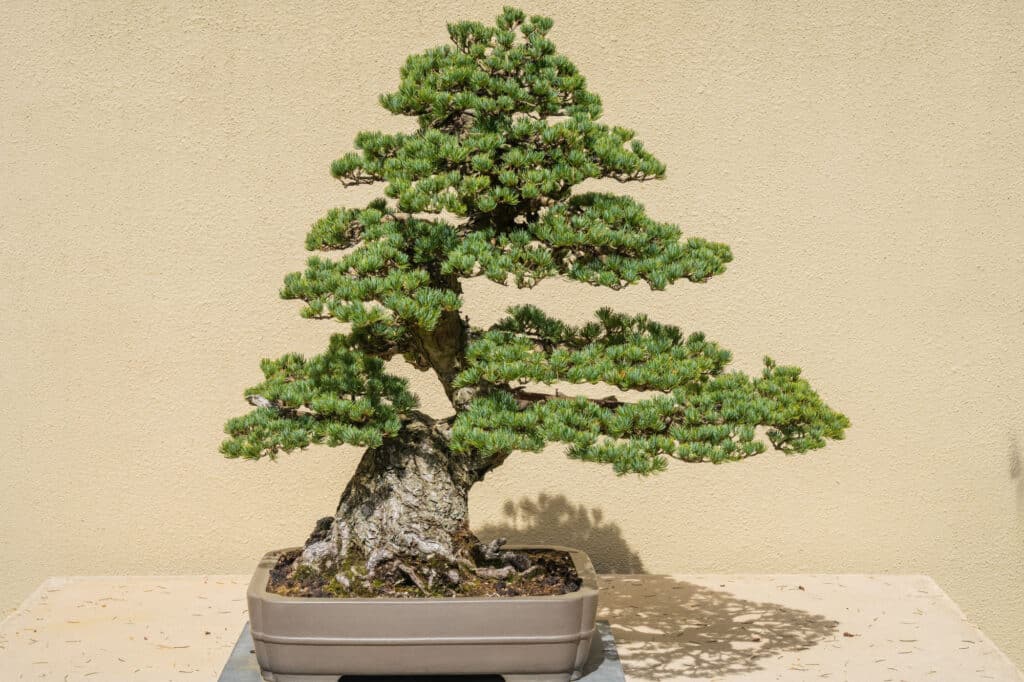
Whether large or small, Japanese white pines are gorgeous.
©Mariusz S. Jurgielewicz/Shutterstock.com
Did you know that just about any type of shrub or tree can be grown in miniature form? Bonsai refers to the ancient art of crafting miniature trees or shrubs for their ornamental use. It does not refer to a specific species or type of tree, contrary to popular belief.
The meaning of the word Bonsai is simply “planted in a container”. This art of creating miniature trees in a container format has been around for thousands upon thousands of years. In fact, Bonsai experts dedicate their lives to creating beautiful and serene landscapes that can be enjoyed inside your very own home.
So, just about any type of tree or shrub can be grown as a Bonsai or incorporated into a miniature landscape. These living art pieces require a high level of care and expertise in order to grow and thrive. With the right tools and knowledge, you can care for Bonsai trees for centuries, as many Bonsai trees live for hundreds of years!
The Most Common and Popular Types of Bonsai Trees
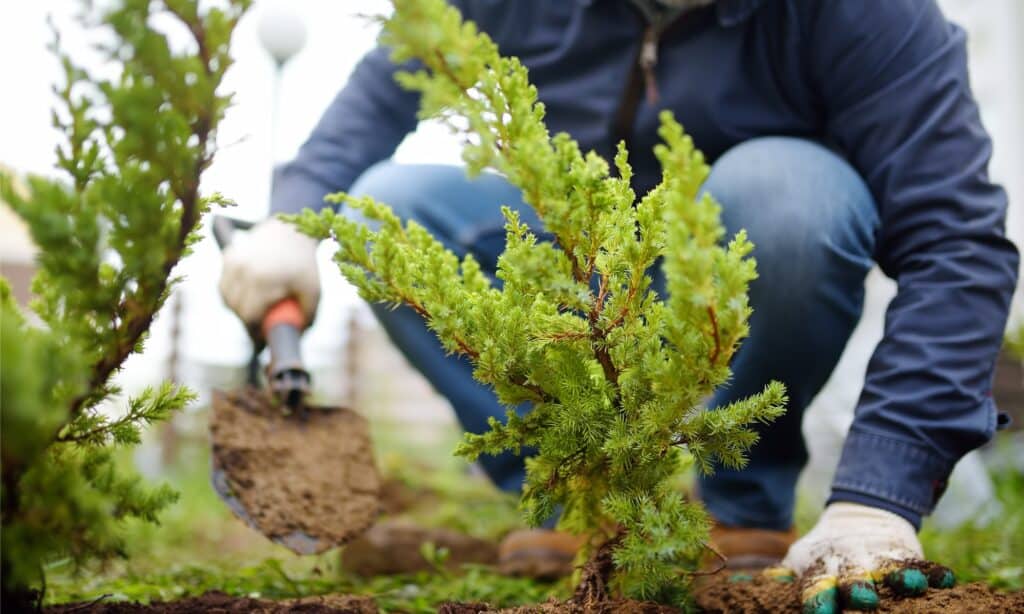
Junipers come in tree and shrub forms.
©iStock.com/SbytovaMN
Given the fact that any tree or shrub can be grown as a Bonsai indoors, we can’t address every single different type of Bonsai tree. However, here’s a list of some of the most common and popular types of Bonsai trees, ranging in difficulty and ornamental appearance.
Elm
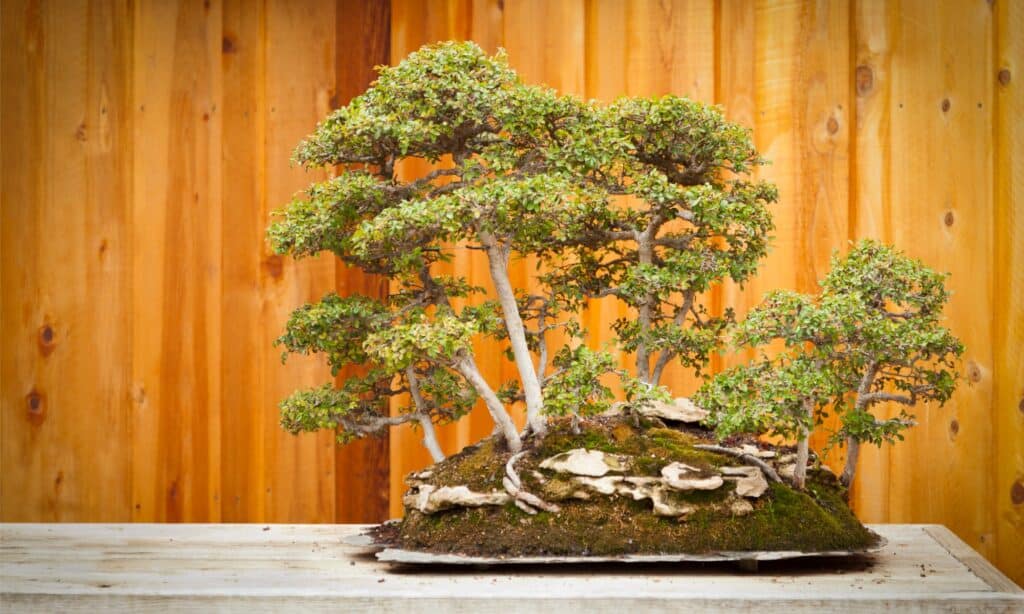
You can grow an entire stand of elm Bonsai trees in a single container.
©iStock.com/Feverpitched
The most popular elm tree variety for Bonsai use has to be the Chinese elm. Classified as Ulmus parvifolia, the Chinese elm grows small leaves that suit a Bonsai landscape well. It also develops a scaly bark as it ages, sometimes patchy with orange or white. Most elms are well-suited for Bonsai cultivation, including the Siberian elm.
Maple
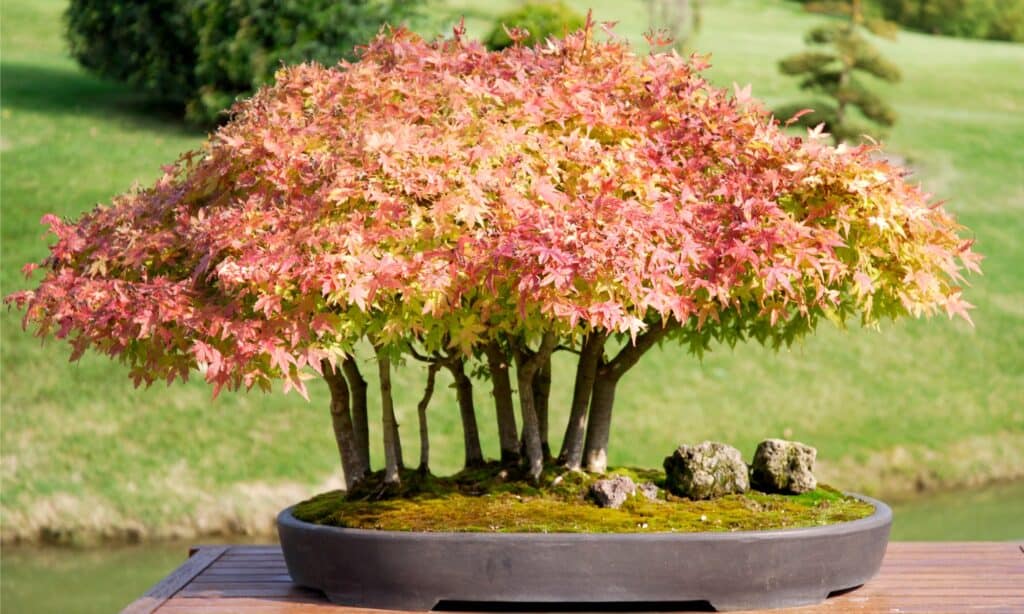
Japanese and red maples are some of the most popular tree varieties for maple Bonsais.
©iStock.com/Musat
There’s nothing more iconic than a Japanese maple Bonsai tree. Maple Bonsai trees are deciduous even in miniature form, which means that their five-pointed leaves will change color with the seasons. Japanese maple Bonsai trees are the most popular maples used in a Bonsai format, but you can use any maple tree you like. These Bonsai trees are prized for their foliage and general cold hardiness.
Juniper
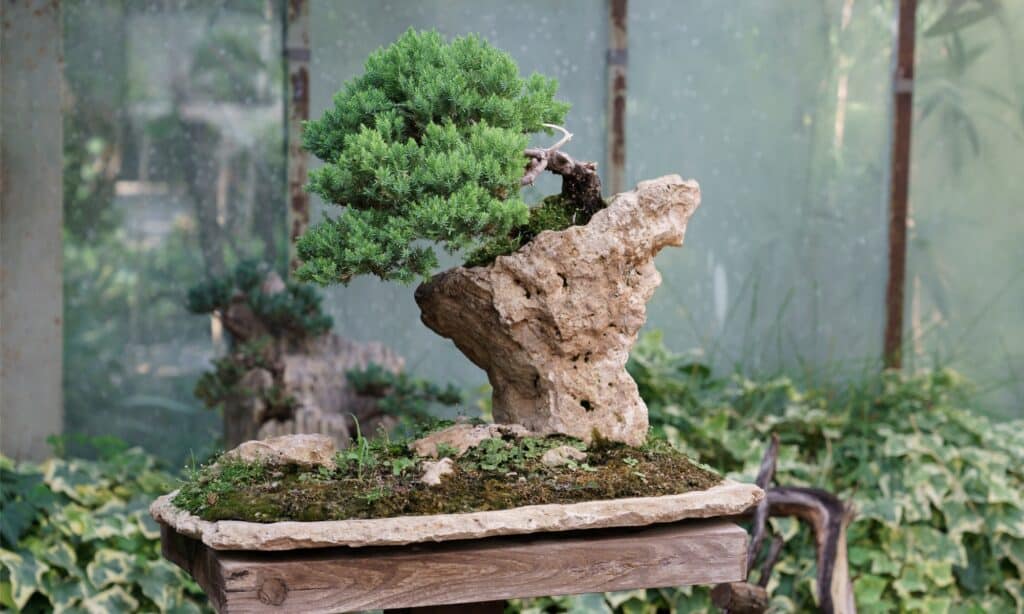
You can craft your juniper Bonsai to grow on rocks.
©iStock.com/Dima Berlin
While you can’t grow juniper Bonsai trees indoors, the elements truly shape these trees and make them beautiful. Cold tolerant down to 15 degrees Fahrenheit, juniper Bonsais have two different types of foliage known as scale or needle foliage. This gives your tree a distinct appearance, but the bark of the juniper tree is where it really stands out. As the tree ages, its peeling or dying branches and trunks reveal many different colors, depending on temperature and air quality.
Pine
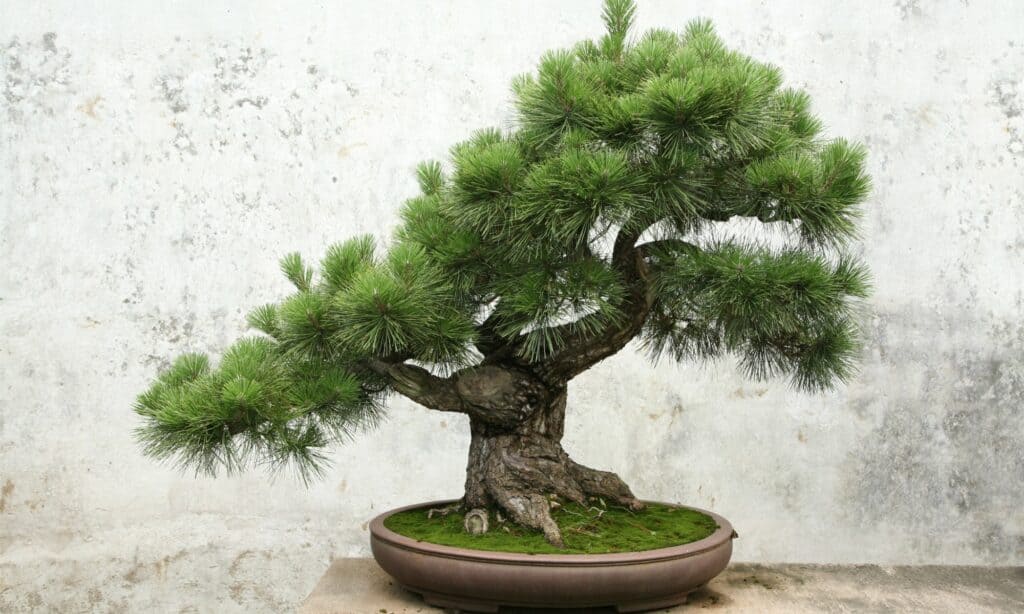
Some of the most common Bonsais are pine trees.
©iStock.com/Banannaanna
Pine tree Bonsais are so popular that they are often considered to be the poster child for Bonsai trees. Japanese black or red pine trees are especially popular, but remember that you can grow any type of pine tree as a Bonsai! Their upward-facing needles make Bonsai pine trees especially ornamental, and most varieties are easy to shape and take care of compared to other trees.
Willow
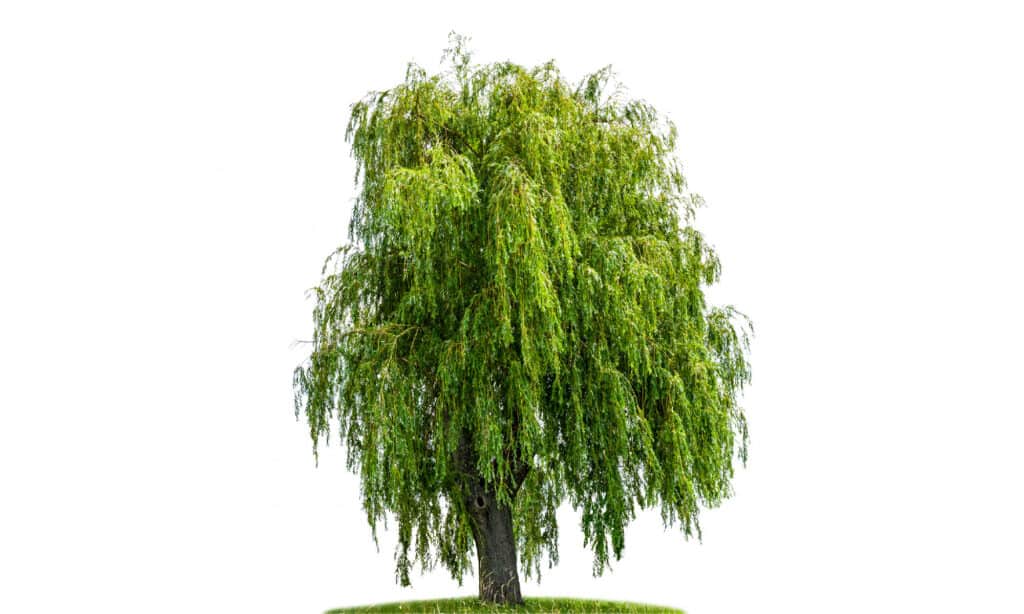
The beginner Bonsai hobbyist should not opt for a weeping willow Bonsai tree.
©iStock.com/Zerbor
While willow Bonsai trees are not recommended for new Bonsai owners or hobbyists, you may be tempted to grow a weeping willow Bonsai in particular. Often larger than the average Bonsai tree, weeping willow Bonsais produce elegant draping foliage that looks best in a large pot. Willow trees grow extremely quickly and need to be cared for often, so make sure that you are up for the task!
Ficus

Some of the easiest Bonsai trees to care for are figs.
©iStock.com/RenataKa
One of the easiest Bonsai trees to grow has to be the ficus. This particular tree can only grow indoors, but there are enough varieties and beautiful structures to make that you’ll enjoy seeing it all of the time! The ginseng ficus is particularly popular, but there are other varieties that produce aerial roots, or above-ground roots that can be shaped to your liking. It’s difficult to kill a ficus Bonsai, so this is a great one for beginners.
Yew

Your yew Bonsai may produce red berries.
©iStock.com/N/A
While all yew trees are technically poisonous, keeping a yew as a Bonsai is a rewarding effort. The wood of the yew tree is particularly hard and easy to shape, giving you plenty of opportunities to structure it the way you’d like. However, yew trees grow extremely slowly and live for hundreds if not thousands of years, so be sure you are ready for the commitment!
Serissa
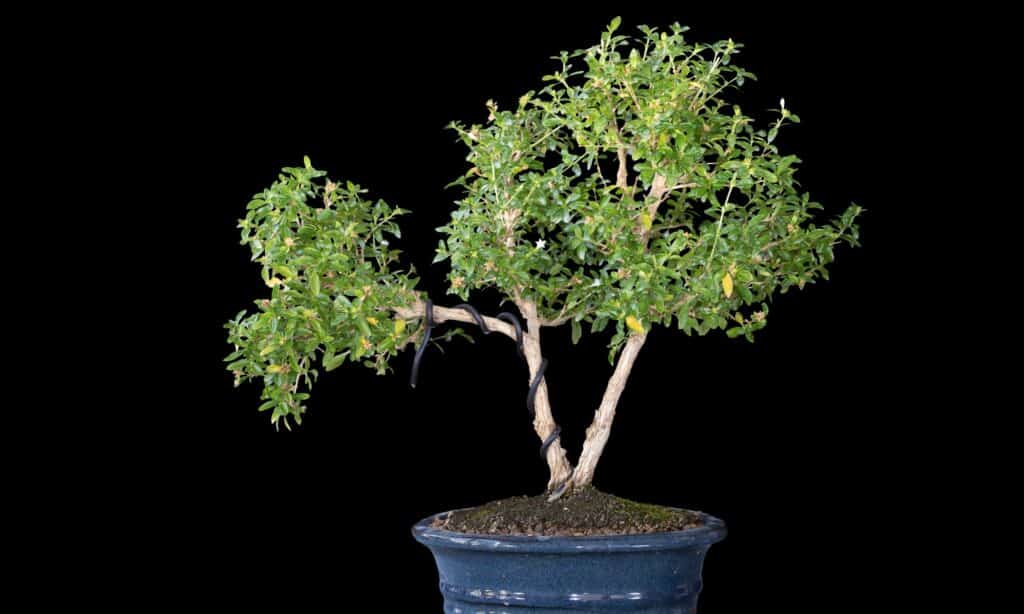
Also known as the snow rose, serissa Bonsai trees remain delicate.
©iStock.com/taviphoto
Capable of producing delicate white flowers, the serissa Bonsai is not ideal for beginners. In fact, this tree is highly susceptible to changes in temperature and light, so proper placement is necessary. The serissa Bonsai is also known as the snow rose given its delicate blooms that occur throughout the summertime.
Cedar
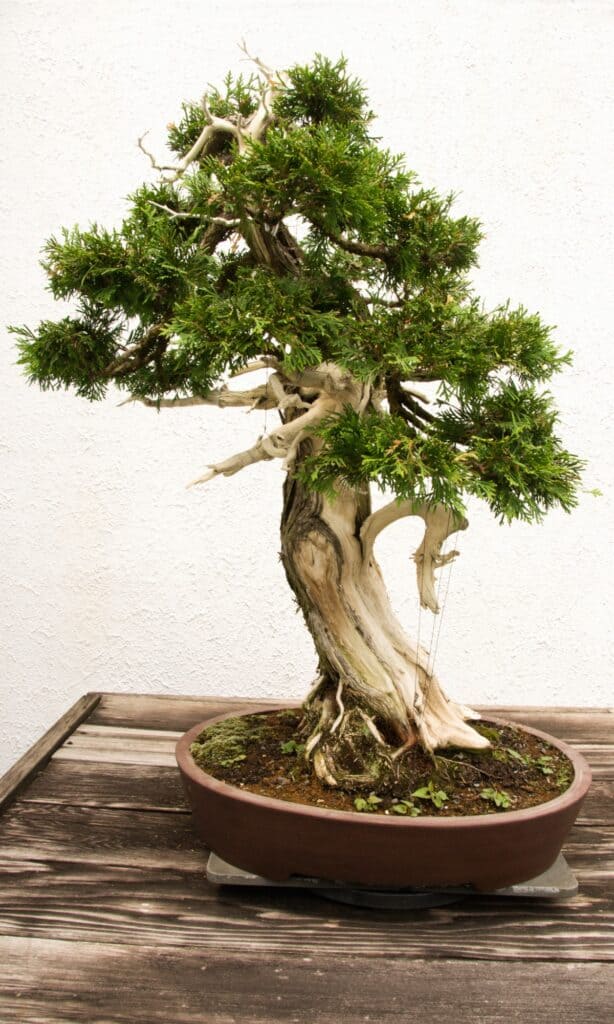
Attractive and ornamental, cedar Bonsais also have a pleasant scent.
©iStock.com/LCBallard
While they aren’t the most popular of Bonsai trees, cedars make excellent Bonsai specimens. They produce a lovely smell that brings the forest indoors, and many different cedar cultivars produce different types of foliage. The straight trunks of the average cedar Bonsai make it stand out, especially when paired with twisting or gnarled branching trees.
Boxwood
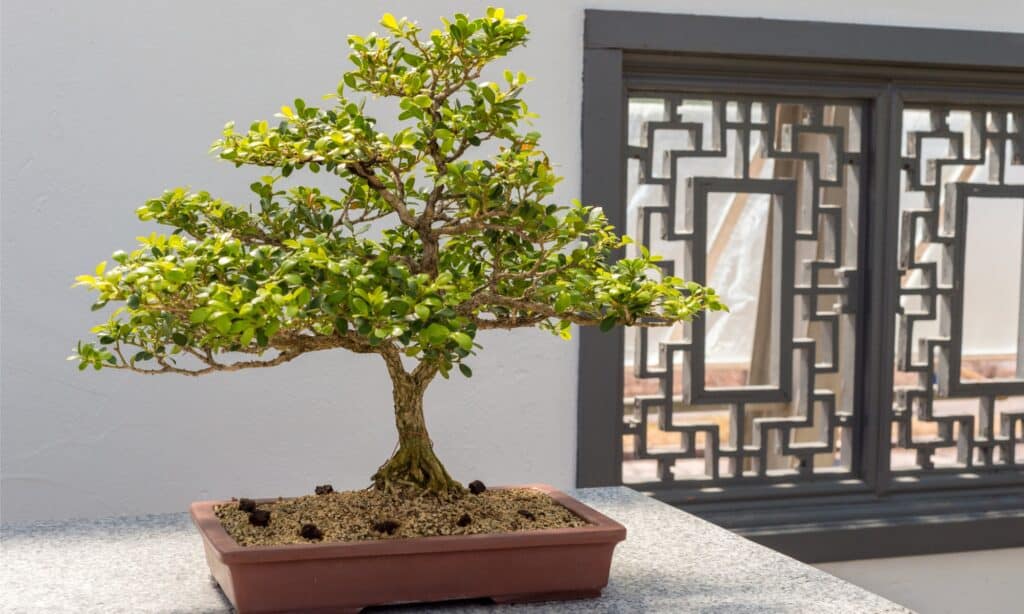
Most boxwood Bonsais maintain their small, delicate leaves.
©iStock.com/MarcBruxelle
Cultivated from hedges that are typically used in a topiary setting, boxwood Bonsais are perfect for the beginner or the expert alike. These trees thrive from consistent pruning and maintenance, often sprouting new growth from pruned locations. One of the most popular boxwood Bonsai cultivars is the Chinese boxwood.
Fir
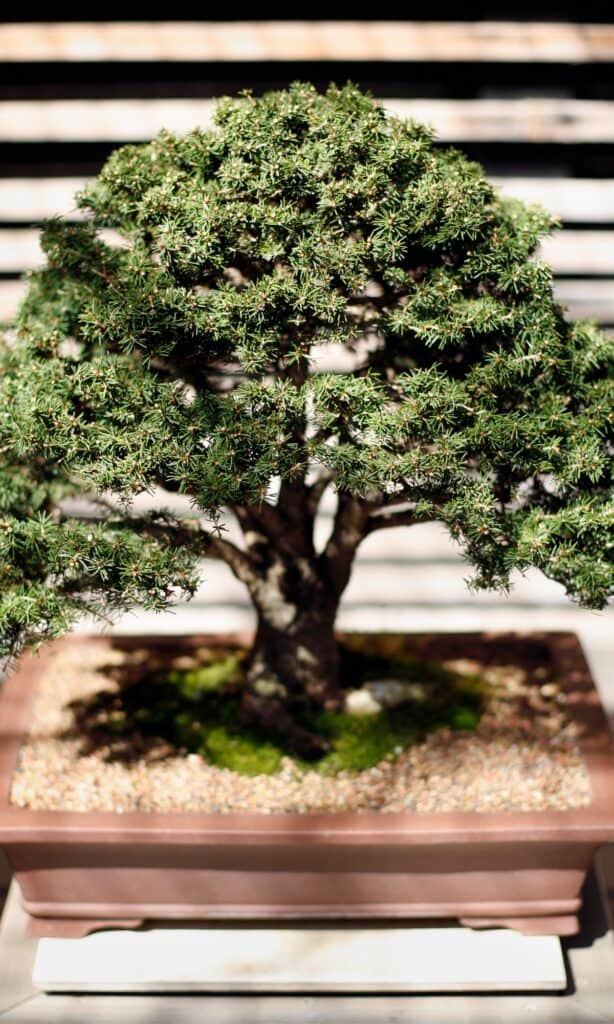
The small needles on the average for Bonsai make it an attractive choice.
©iStock.com/slovegrove
Similarly to cedar Bonsais, fir Bonsai trees are not often cultivated. However, their straight trunks and shaggy bark make them distinct from other types of Bonsai trees. The silver fir tree is one of the most popular trees to use in a Bonsai setting, especially when it is paired with rocks and mossy green landscaping.
Beech
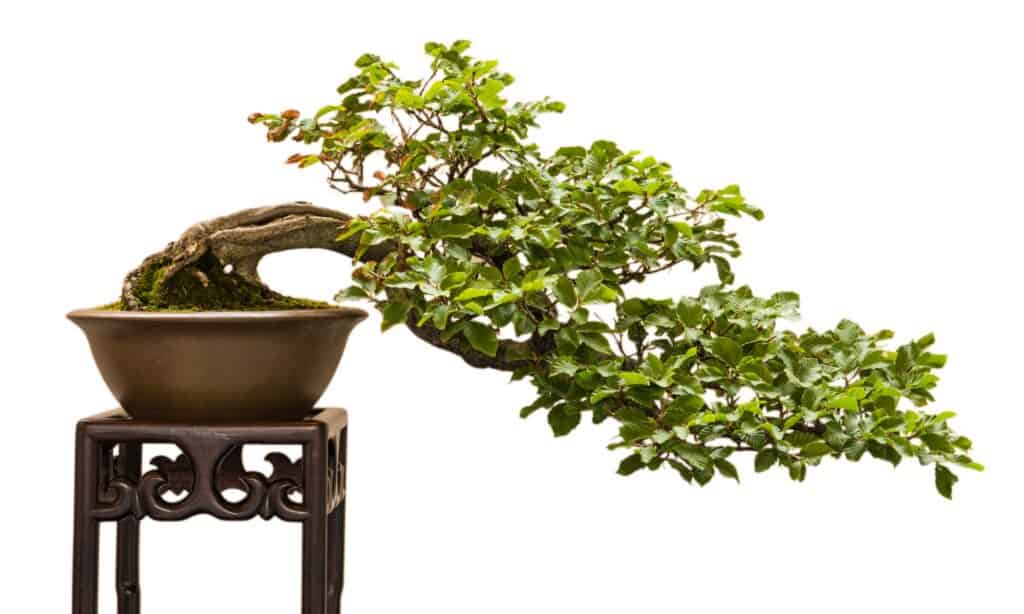
Shaping beech Bonsai trees takes time and practice.
©iStock.com/photohomepage
Some species of beech Bonsai trees keep their leaves year-round, even after they have changed color. The most popular beech tree varieties used in a Bonsai setting include the European beech and the Japanese white beech tree. However, any variety will have smooth, grayish bark and their wide, deciduous leaves will change color once the weather shifts.
Cherry
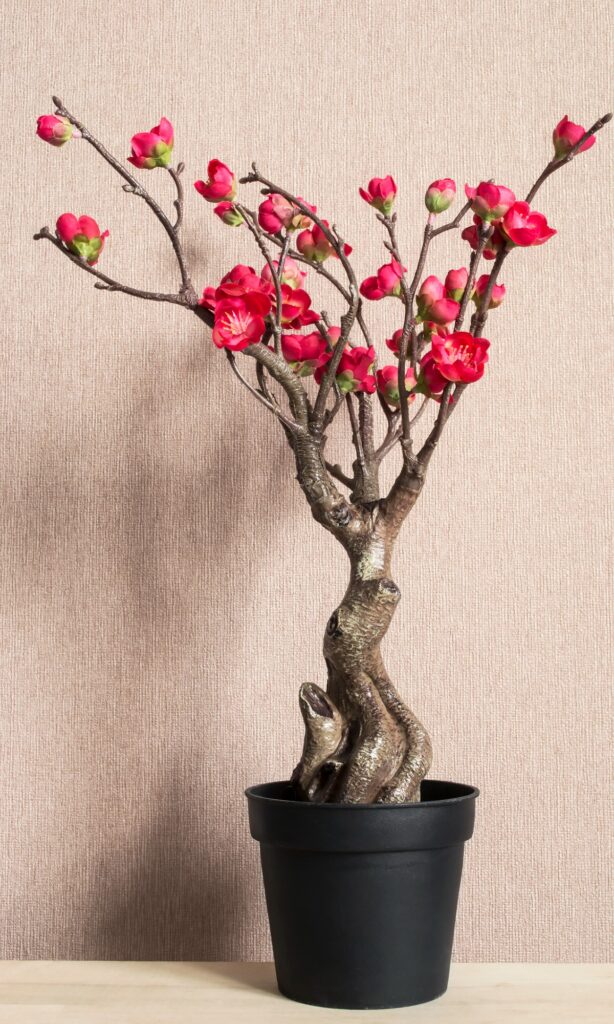
You can shape a cherry Bonsai tree with relative ease.
©iStock.com/Tarzhanova
If you are a fan of Japanese cherry blossoms, you may be able to recreate this beautiful phenomenon indoors with a cherry Bonsai tree. Capable of producing delicate pink blooms and even microscopic fruit, cherry Bonsai trees are prized for their ornamental blooms that pair in direct contrast with their gnarled trunks.
Azalea
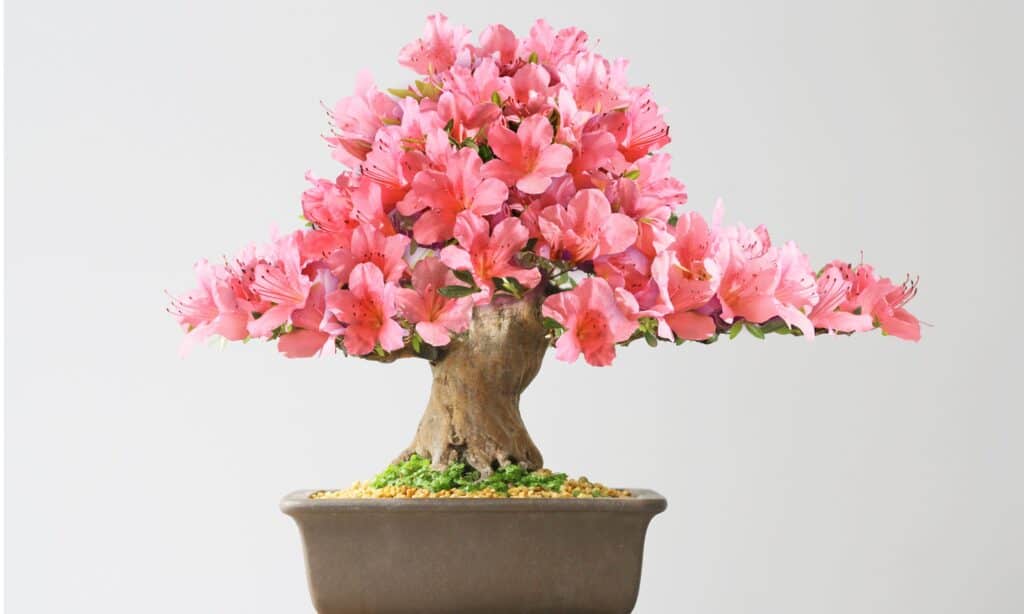
Found in a variety of colors, azalea Bonsais produce gorgeous flowers.
©iStock.com/StanOd
Speaking of beautiful blooms, growing an azalea Bonsai is a rewarding process because of its flowers. You can find azalea Bonsais in a variety of colors, and these blooms are large and capable of covering your entire tree. When not in bloom, azalea Bonsai trees have attractive, deep green foliage.
Oak
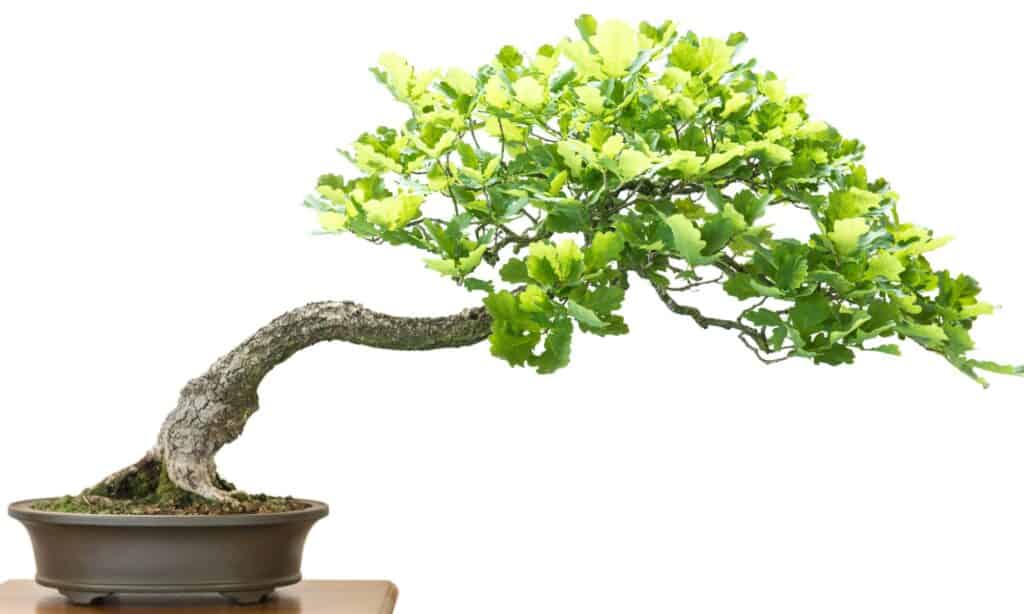
You can grow any type of oak tree as a Bonsai.
©iStock.com/photohomepage
Another fantastic Bonsai for beginners has to be the oak tree Bonsai. You can use any oak cultivar for your Bonsai tree, and many of these varieties are deciduous. This means that they will transform in the fall season, and some oak Bonsais may even produce tiny acorns for you to enjoy!
Crabapple

You can get tiny crabapples from a crabapple Bonsai tree!
©iStock.com/bullantmultimedia
You can grow either apple or crabapple trees as Bonsais, depending on what is readily available for you. These trees produce tiny fruits and have larger leaves than the average Bonsai, which means they may need a bit more pruning. However, these trees thrive in full sunlight outdoors, making them a versatile Bonsai for those of you who don’t have a lot of indoor space.
Cypress
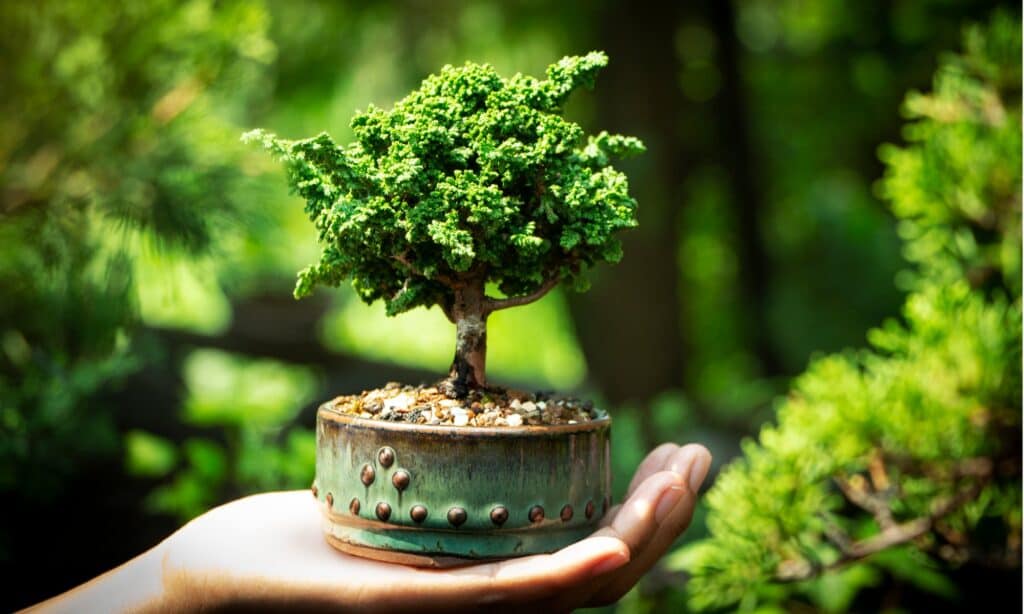
Many beginners have decent success cultivating cypress Bonsais.
©iStock.com/ANUCHA JAROENSUK
The bald cypress and the Japanese Hinoki cypress are some of the most popular cypress trees to grow in a Bonsai format. With straight, rigid trunks, and large, visible roots, cypress trees are striking when kept in a container and surrounded by other landscaping foliage. Keep in mind that most cypress trees are not cold-hardy and should be brought indoors during the winter season.
Buttonwood
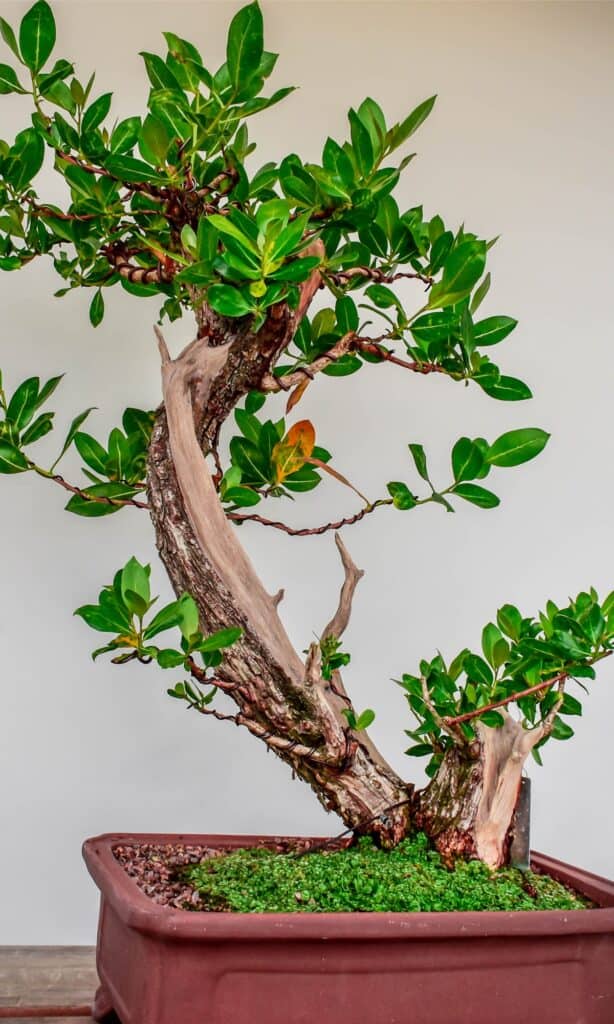
The flaky bark of the buttonwood Bonsai makes it a favorite.
©iStock.com/Brittany Tande
Often ignored because of its gnarled, jagged wood, buttonwood Bonsais are perfect for those of you seeking something unique and eye-catching. These tropical trees thrive indoors in as much sunlight as you can manage, and their trunks curl or twist without much training. This is a great Bonsai for beginners with indoor growing setups, especially if you want to practice shaping a Bonsai tree.
Jade
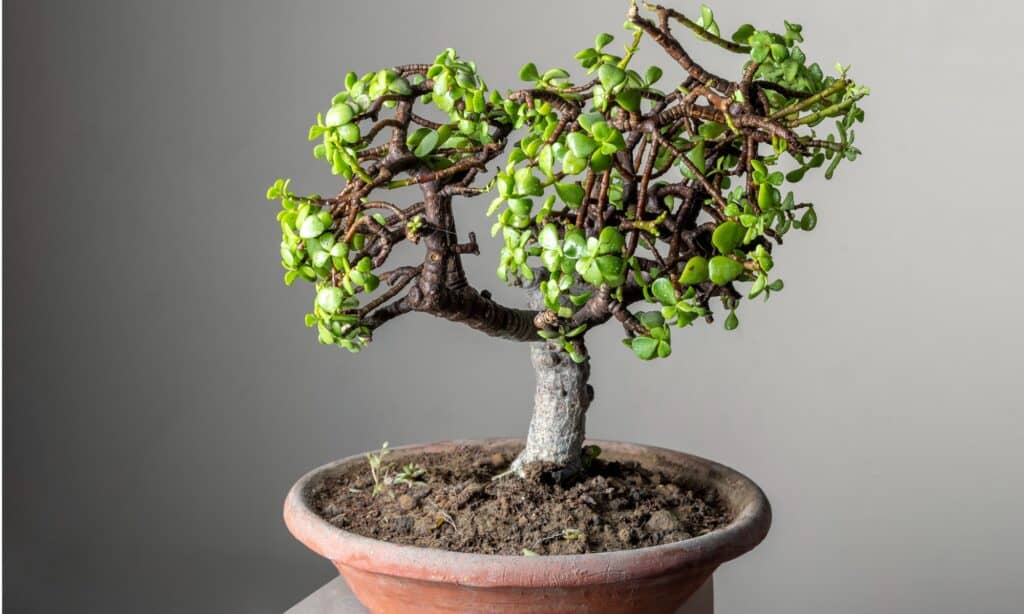
With bright green leaves and gray trunks, jade Bonsais are striking.
©iStock.com/prabhjits
Also known as a dwarf jade, jade Bonsai trees have succulent leaves and bark that transform from a reddish color into a deep brown as it ages. The foliage is truly what makes a jade Bonsai special, as it is compact and rounded, suiting a smaller tree like a Bonsai. This is also a fairly easy Bonsai to care for, indoors or out.
Ginkgo
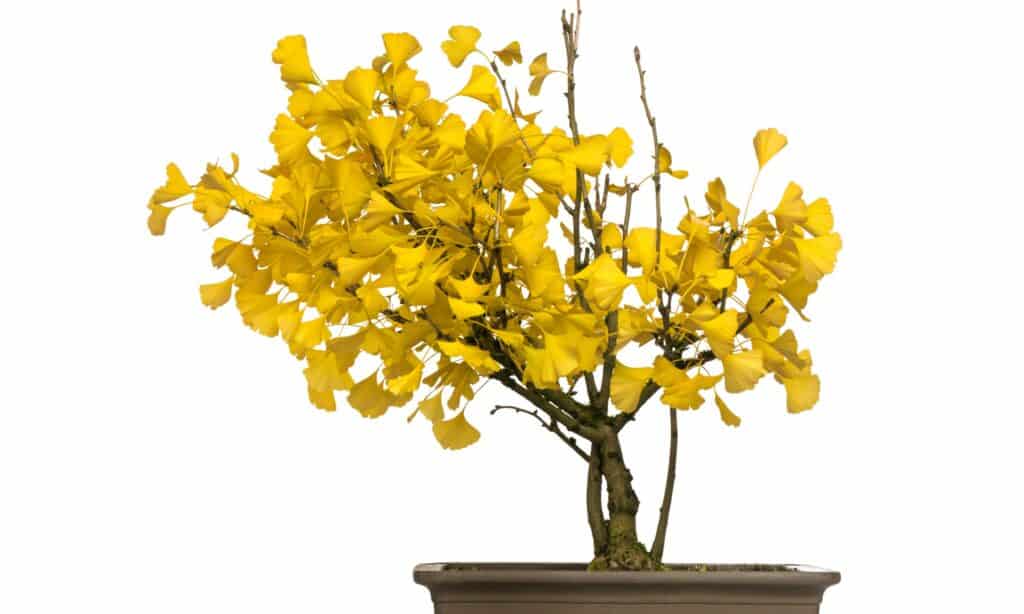
The leaves of the ginkgo Bonsai are fan-shaped.
©iStock.com/GlobalP
With fan-shaped leaves, ginkgo Bonsai trees have a deciduous, iconic appearance. It is important to note that all ginkgo Bonsai trees have to be grown outdoors, especially if you want them to produce their beautiful leaf displays come fall. The trunks of the ginkgo tree are typically light in color, thick, and striking as you shape it.
Privet
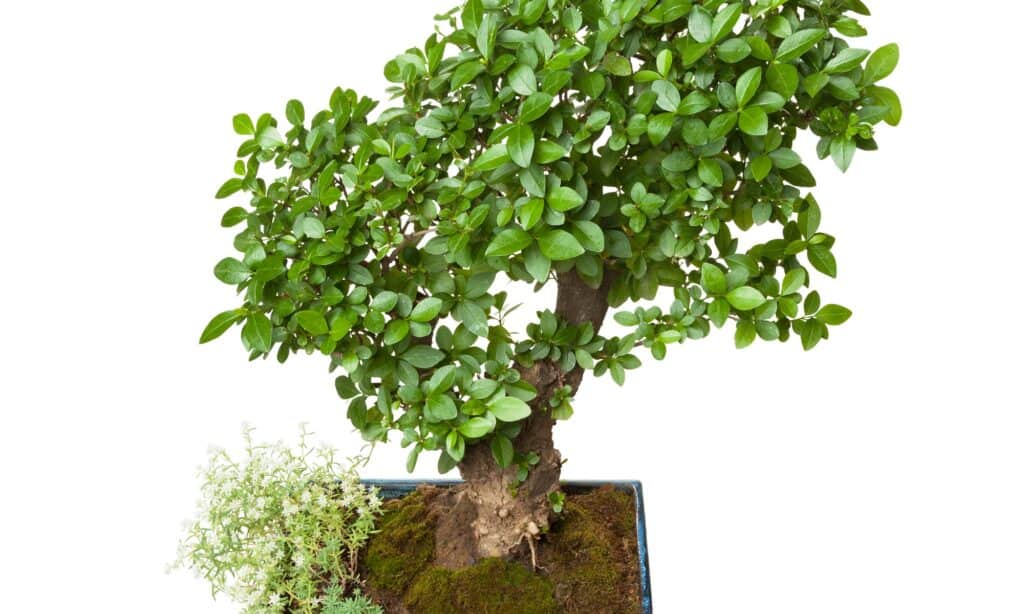
The average privet Bonsai maintains delicate and rounded foliage.
©iStock.com/Reload_Studio
Privet plants are often used as shrubs. This makes privets another fantastic Bonsai variety for beginners. Privet Bonsai trees enjoy pruning. They won’t suffer from too much trimming. They have oval-shaped leaves and come in many different cultivars, all of them ideal for new Bonsai enthusiasts!
Summary of The Different Types of Bonsai Trees
Here are the different types of Bonsai Trees:
| Rank | Bonsai Trees |
|---|---|
| 1 | Elm |
| 2 | Maple |
| 3 | Juniper |
| 4 | Pine |
| 5 | Willow |
| 6 | Ficus |
| 7 | Yew |
| 8 | Serissa |
| 9 | Cedar |
| 10 | Boxwood |
| 11 | Fir |
| 12 | Beech |
| 13 | Cherry |
| 14 | Azalea |
| 15 | Oak |
| 16 | Crabapple |
| 17 | Cypress |
| 18 | Buttonwood |
| 19 | Jade |
| 20 | Ginkgo |
| 21 | Privet |
The photo featured at the top of this post is © iStock.com/photohomepage
Sources
- Bonsai: A compact representation of trees, Available here: https://onlinelibrary.wiley.com/doi/abs/10.1002/spe.4380230305
- Subtropical bonsai for indoor gardening, Available here: https://www.jstor.org/stable/42953928
Thank you for reading! Have some feedback for us? Contact the AZ Animals editorial team.






